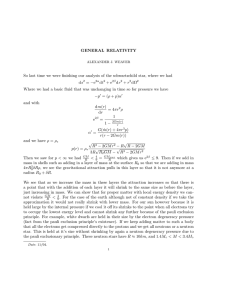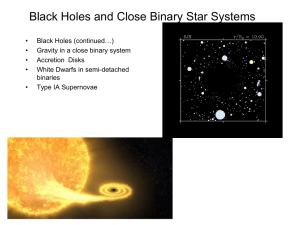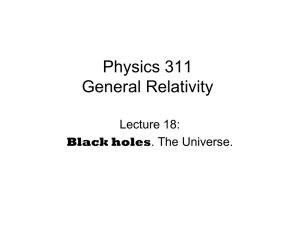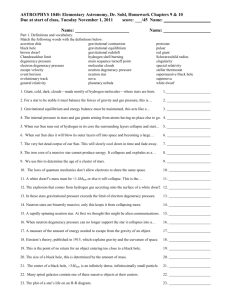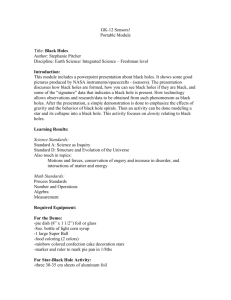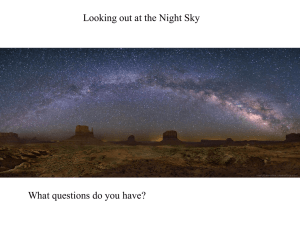Notes on Black Holes
advertisement
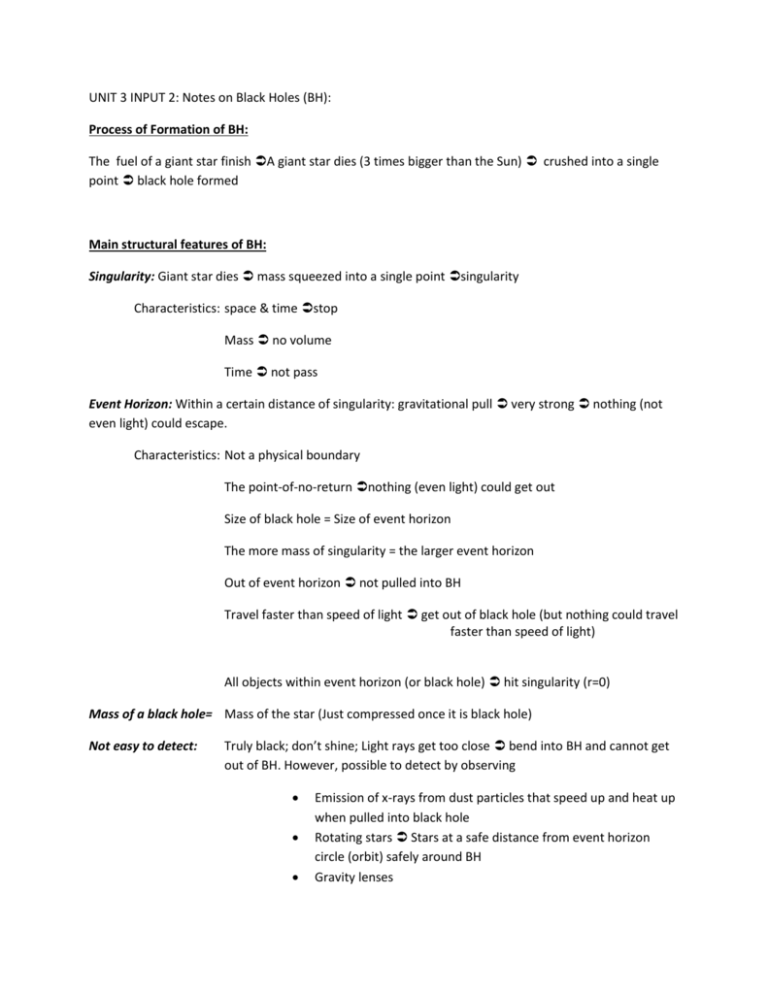
UNIT 3 INPUT 2: Notes on Black Holes (BH): Process of Formation of BH: The fuel of a giant star finish A giant star dies (3 times bigger than the Sun) crushed into a single point black hole formed Main structural features of BH: Singularity: Giant star dies mass squeezed into a single point singularity Characteristics: space & time stop Mass no volume Time not pass Event Horizon: Within a certain distance of singularity: gravitational pull very strong nothing (not even light) could escape. Characteristics: Not a physical boundary The point-of-no-return nothing (even light) could get out Size of black hole = Size of event horizon The more mass of singularity = the larger event horizon Out of event horizon not pulled into BH Travel faster than speed of light get out of black hole (but nothing could travel faster than speed of light) All objects within event horizon (or black hole) hit singularity (r=0) Mass of a black hole= Mass of the star (Just compressed once it is black hole) Not easy to detect: Truly black; don’t shine; Light rays get too close bend into BH and cannot get out of BH. However, possible to detect by observing Emission of x-rays from dust particles that speed up and heat up when pulled into black hole Rotating stars Stars at a safe distance from event horizon circle (orbit) safely around BH Gravity lenses Key terms: x-rays = dust particles pulled into black holes seed up and heat up and emit x-rays Rotating stars= Stars rotate around black holes when they are at a certain distance from the event horizon Gravity lenses: When a big object passes between a star and the Earth, the object acts like a lens and causes the star to brighten (used to detect BH) Radial distance: How far away one is from the singularity Escape velocity: the speed needed for a star to break free from another’s gravity Spherical surface (SS): A BH from a large distance seen as unmoving SS.


